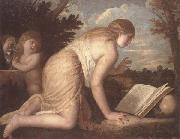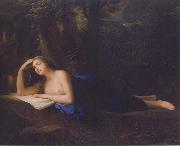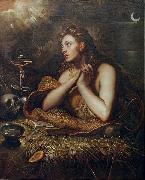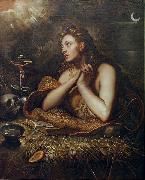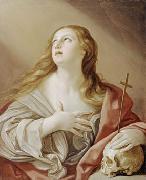Wholesale Oil Painting No Minimum |
|||||||||||
|
|
|||||||||||

|
|||||||||||
|
|
|
||||||||
|
|
||||||||
The penitent magdalene
The penitent magdalene Painting ID:: 27377 |
mk56
oil on canvas
Alessandro Varotari,called il padovanino
mk56 oil on canvas Alessandro Varotari,called il padovanino |
|||||||
|
|
||||||||
Friedrich Heinrich FugerGerman Neoclassical Painter, 1751-1818 |
||||||||
|
|
||||||||
|
|
The Penitent Magdalene
The Penitent Magdalene Painting ID:: 41535 |
mk164
1808
Neue Pinakothek
Munich
mk164 1808 Neue Pinakothek Munich |
||||||
|
|
||||||||
Domenico TintorettoItalian, 1560-1635,Son of Jacopo Tintoretto. He was taught by his father and assisted him in his workshop. At the age of 17 he was admitted to the Venetian painters' guild, and he is recorded in the confraternity of painters from 1594. He began his career by helping his father to execute the paintings in the Sala del Collegio and Sala del Senato in the Doge's Palace, Venice. Following this he worked independently at the palace, on the Sala dello Scrutinio and the Sala del Maggiore Consiglio. His training with his father helped him in his own compositions, several of which, such as the Battle of Salvore, or the Second Conquest of Constantinople, are heroic battle themes with complex groupings and dramatic poses. In the last two decades of the 16th century Domenico concentrated on religious commissions in Venice, including a Last Supper and Crucifixion (both c. 1583) for S Andrea della Zirada (both in situ), a Marriage of the Virgin for S Giorgio Maggiore (in situ) and a Crucifixion for the Scuola dei Mercanti. |
||||||||
|
|
||||||||
|
|
The Penitent Magdalene
The Penitent Magdalene Painting ID:: 80284 |
ca. 1598(1598)
Oil on canvas
cjr ca. 1598(1598) Oil on canvas cjr |
||||||
|
|
||||||||
Domenico TintorettoItalian, 1560-1635,Son of Jacopo Tintoretto. He was taught by his father and assisted him in his workshop. At the age of 17 he was admitted to the Venetian painters' guild, and he is recorded in the confraternity of painters from 1594. He began his career by helping his father to execute the paintings in the Sala del Collegio and Sala del Senato in the Doge's Palace, Venice. Following this he worked independently at the palace, on the Sala dello Scrutinio and the Sala del Maggiore Consiglio. His training with his father helped him in his own compositions, several of which, such as the Battle of Salvore, or the Second Conquest of Constantinople, are heroic battle themes with complex groupings and dramatic poses. In the last two decades of the 16th century Domenico concentrated on religious commissions in Venice, including a Last Supper and Crucifixion (both c. 1583) for S Andrea della Zirada (both in situ), a Marriage of the Virgin for S Giorgio Maggiore (in situ) and a Crucifixion for the Scuola dei Mercanti. |
||||||||
|
|
||||||||
|
|
The Penitent Magdalene
The Penitent Magdalene Painting ID:: 84523 |
1598(1598)
Medium Oil on canvas
cyf 1598(1598) Medium Oil on canvas cyf |
||||||
|
|
||||||||
Guido Reni1575-1642 Italian Guido Reni Galleries Born in Bologna into a family of musicians, Guido Reni was the son of Daniele Reni and Ginevra de?? Pozzi. As a child of nine, he was apprenticed under the Bolognese studio of Denis Calvaert. Soon after, he was joined in that studio by Albani and Domenichino. He may also have trained with a painter by the name of Ferrantini. When Reni was about twenty years old, the three Calvaert pupils migrated to the rising rival studio, named Accademia degli Incamminati (Academy of the "newly embarked", or progressives), led by Lodovico Carracci. They went on to form the nucleus of a prolific and successful school of Bolognese painters who followed Annibale Carracci to Rome. Like many other Bolognese painters, Reni's painting was thematic and eclectic in style. By late 1601, Reni and Albani had moved to Rome to work with the teams led by Annibale Carracci in fresco decoration of the Farnese Palace. During 1601-1604, his main patron was cardinal Sfondrato. By 1604-1605, he received an independent commission for an altarpiece of the Crucifixion of St. Peter. After a few year sojourn in Bologna, he returned to Rome to become one of the premier painters during the papacy of Paul V (Borghese). From 1607-1614, he was one of the painters patronized by Borghese. Abduction of Deianira, 1620-1621.Reni's frescoed ceiling of the large central hall of garden palace, Casino dell'Aurora located in the grounds of the Palazzo Pallavicini-Rospigliosi, is considered his masterpiece. The casino was originally a pavilion commissioned by Cardinal Scipione Borghese; the rear portion overlooks the Piazza Montecavallo and Palazzo del Quirinale. The massive fresco is framed in quadri riportati and depicts Apollo in his Chariot preceded by Dawn (Aurora) bringing light to the world. The work is restrained in classicism, copying poses from Roman Sarcophagi, and showing far more simplicity and restraint than Carracci's riotous Triumph of Bacchus and Ariadne[5] in the Farnese. Reni in this painting is allies himself more with the sterner Cavaliere d'Arpino,Lanfranco, and Albani "School" of mytho-historic painting, and less with the more crowded frescoes characteristic of Pietro da Cortona. There is little concession to perspective, and the vibrantly colored style is antithetical to the tenebrism of Caravaggio's followers. Payments showed that he was paid in 247 scudi and 54 baiocchi upon completion on 24 September 1616. He also frescoed in Paoline Chapel of Santa Maria Maggiore in Rome as well as the Aldobrandini wings of the Vatican. According to rumor, the pontifical chapel of Montecavallo (Chapel of the Annuciation) was assigned to Reni to paint. However, because he felt underpaid by the ministers, the artist left for Bologna, leaving the role of the preeminent artist in Rome to Domenichino. |
||||||||
|
|
||||||||
|
|
The Penitent Magdalene
The Penitent Magdalene Painting ID:: 87054 |
1638(1638)
Medium Oil on canvas
Dimensions 91 x 74 cm (35.8 x 29.1 in)
cyf 1638(1638) Medium Oil on canvas Dimensions 91 x 74 cm (35.8 x 29.1 in) cyf |
||||||
|
|
||||||||
|
Guido Reni 1575-1642 Italian Guido Reni Galleries Born in Bologna into a family of musicians, Guido Reni was the son of Daniele Reni and Ginevra de?? Pozzi. As a child of nine, he was apprenticed under the Bolognese studio of Denis Calvaert. Soon after, he was joined in that studio by Albani and Domenichino. He may also have trained with a painter by the name of Ferrantini. When Reni was about twenty years old, the three Calvaert pupils migrated to the rising rival studio, named Accademia degli Incamminati (Academy of the "newly embarked", or progressives), led by Lodovico Carracci. They went on to form the nucleus of a prolific and successful school of Bolognese painters who followed Annibale Carracci to Rome. Like many other Bolognese painters, Reni's painting was thematic and eclectic in style. By late 1601, Reni and Albani had moved to Rome to work with the teams led by Annibale Carracci in fresco decoration of the Farnese Palace. During 1601-1604, his main patron was cardinal Sfondrato. By 1604-1605, he received an independent commission for an altarpiece of the Crucifixion of St. Peter. After a few year sojourn in Bologna, he returned to Rome to become one of the premier painters during the papacy of Paul V (Borghese). From 1607-1614, he was one of the painters patronized by Borghese. Abduction of Deianira, 1620-1621.Reni's frescoed ceiling of the large central hall of garden palace, Casino dell'Aurora located in the grounds of the Palazzo Pallavicini-Rospigliosi, is considered his masterpiece. The casino was originally a pavilion commissioned by Cardinal Scipione Borghese; the rear portion overlooks the Piazza Montecavallo and Palazzo del Quirinale. The massive fresco is framed in quadri riportati and depicts Apollo in his Chariot preceded by Dawn (Aurora) bringing light to the world. The work is restrained in classicism, copying poses from Roman Sarcophagi, and showing far more simplicity and restraint than Carracci's riotous Triumph of Bacchus and Ariadne[5] in the Farnese. Reni in this painting is allies himself more with the sterner Cavaliere d'Arpino,Lanfranco, and Albani "School" of mytho-historic painting, and less with the more crowded frescoes characteristic of Pietro da Cortona. There is little concession to perspective, and the vibrantly colored style is antithetical to the tenebrism of Caravaggio's followers. Payments showed that he was paid in 247 scudi and 54 baiocchi upon completion on 24 September 1616. He also frescoed in Paoline Chapel of Santa Maria Maggiore in Rome as well as the Aldobrandini wings of the Vatican. According to rumor, the pontifical chapel of Montecavallo (Chapel of the Annuciation) was assigned to Reni to paint. However, because he felt underpaid by the ministers, the artist left for Bologna, leaving the role of the preeminent artist in Rome to Domenichino. The Penitent Magdalene 1638(1638) Medium Oil on canvas Dimensions 91 x 74 cm (35.8 x 29.1 in) cyf |
||||||||
|
|
||||||||
|
Prev Next
|
||||||||
|
|
||||||||
|
Related Paintings to Guido Reni :. |
||||||||
|
|
||||||||
|
CONTACT US |
